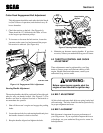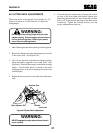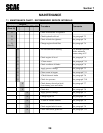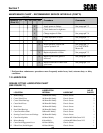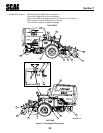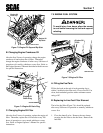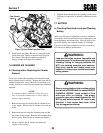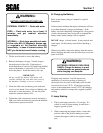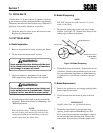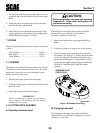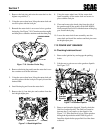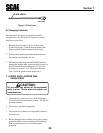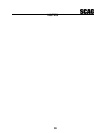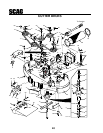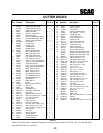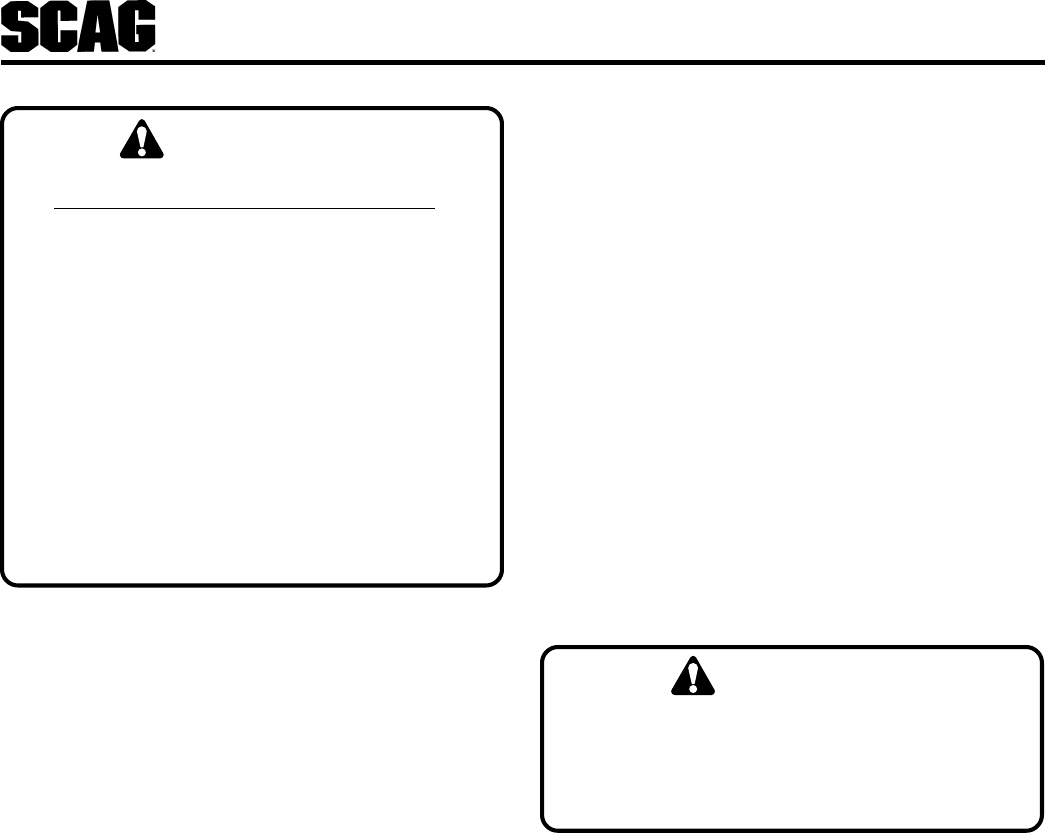
34
Section 7
WARNING:
B. Charging the Battery
Refer to the battery charger’s manual for specific
instructions.
Under normal conditions the engine’s alternator will have
no problem keeping a charge on the battery. If the
battery has been completely discharged for a long period
of time, the alternator may not be able to recharge the
battery, and a battery charger will be required.
DO NOT charge a frozen battery. It may explode and
cause injury. Let the battery warm before attaching a
charger.
Whenever possible, remove the battery from the mower
before charging and make sure the electrolyte covers the
plates in all cells.
BATTERY ELECTROLYTE FIRST AID
EXTERNAL CONTACT — Flush with water.
EYES — Flush with water for at least 15
minutes and get medical attention
immediately.
INTERNAL — Drink large quantities of water.
Follow with Milk Of Magnesia, beaten egg,
or vegetable oil. Get medical attention
immediately. In case of internal contact, DO
NOT give fluids that would induce vomiting.
1. Tilt the seat forward to access the battery.
2. Remove the battery cell caps. Visually inspect
electrolyte level in the cells. If electrolyte is
below the bottom of vent well, fill with clean distilled
water to the bottom of vent wells (1/4 to 1/2 inch
above the plates). Install the battery cell caps.
-IMPORTANT-
Do not overfill the battery. Electrolyte will
overflow through the vent tube onto parts of
the machine, resulting in severe corrosion.
3. Clean the cable ends and battery posts with steel
wool or a wire brush. Use a solution of baking soda
and water to clean the battery. Do not allow the
solution to enter the battery cells.
4. Tighten the cable connections securely and apply a
light coat of silicone dielectric grease to the terminal
connections to prevent corrosion.
WARNING:
BATTERIES PRODUCE EXPLOSIVE
GASES. Charge the battery in a well
ventilated space so gases produced
while charging can dissipate.
Charging rates between 3 and 50 amperes are
satisfactory if excessive gassing or spewing of
electrolyte does not occur or the battery does not feel
excessively hot (over 125°F). If spewing or gassing
occurs or the temperature exceeds 125°F, the charging
rate must be reduced or temporarily stopped to permit
cooling.
C. Jump Starting
1. The booster battery must be a 12 volt type. If a
vehicle is used for jump starting, it must have a
negative ground system.
2. When connecting the jumper cables, connect the
positive cable to the positive battery post, then
connect the negative cable to the negative battery
post.



